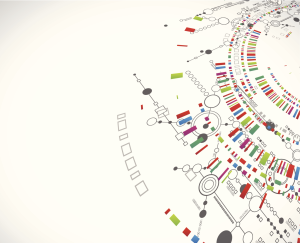Business databases have moved beyond name, address, city, state and zip. Today’s savvy customer relationship management gurus capture purchase history, lifestyle, lifecycle, and lifespan info that enables them to engage, re-engage, and even dis-engage (that’s a fancy word for fire) customers when necessary.
 Customer information that goes deep and reveals the lifetime value of that customer is imperative to long term business growth. To capture and record this data, a good software package is needed, but selecting the appropriate tool can sometimes be confusing. There are a ton of SaaS (software as a service) solutions that may make sense. Look into Salesforce.com, Sugar CRM, or Microsoft Dynamics. Plus, don’t forget to study industry specific packages. Be wary however of forcing the sales process to fit the CRM system. A good CRM solution should be flexible enough to fit your processes.
Customer information that goes deep and reveals the lifetime value of that customer is imperative to long term business growth. To capture and record this data, a good software package is needed, but selecting the appropriate tool can sometimes be confusing. There are a ton of SaaS (software as a service) solutions that may make sense. Look into Salesforce.com, Sugar CRM, or Microsoft Dynamics. Plus, don’t forget to study industry specific packages. Be wary however of forcing the sales process to fit the CRM system. A good CRM solution should be flexible enough to fit your processes.
Who Should Manage Your Database?
It depends. If you’re a small business with a seasoned marketing person on staff, you probably can manage it in-house. The bigger your customer base the bigger the task.
The job of the database manager is to (1) build or buy a database that can capture and contain the needed data fields you wish to monitor (2) modify the database to add new areas of interest or products as your business grows (3) backup the system regularly (4) update customer info, purge customer info or initiate re-engagement campaigns as customers go dormant.
The best B2B relationship management (CRM) databases will allow you sophisticated functionality like multi-level SLA support, customer satisfaction surveys, timer-based escalation rules that are driven by complex criteria and automated issue re-assignments.
Your CRM system should also allow you to integrate with other software tools like your ERP or software, business management solution, website software, email tool, and even your accounting package.
What is the Most Important Data You Must Know or Might Forget to Collect?
A good customer database includes these four basic areas:
- Financial: Revenue generated from the customer’s transactions.
- Demographic: Describing customers in terms of their personal characteristics, such as age, sex, professional activity, etc.
- Geographic: Describing customers in terms of their physical location.
- Psychographic or Behavioral: Describing customers in terms of their preferred activities and actions.
A great CRM database plan allows you to collect and monitor competitor price, market share, and product features. It also allows you to collect data on the number of customer transactions, stores visits, and why they leave.
As you can see, you must plan well to collect the metrics that will guide your business. Businesses that don’t have a good database system or customer relationship management system are at a disadvantage in today’s world. Google’s Chief Economist, Hal Varian, once said that “Datarati are companies that have the edge in consumer data insight. There has been and will continue to be an increased focus on data analysis as companies continue to invest in measuring social media, understanding customer value and modeling customer behavior.
What Should You Do With the Data?
Put it to work! The information you have gathered can be used to a great advantage. Look at what Amazon does with the data it collects as you shop their store. Each time you search for items Amazon tracks and knows what is of interest. Then, when you return, you are presented with items most likely to interest you. That level of data capture is huge in working to drive a business.
Other organizations use that data to personalize their direct mail with Variable Data Printing (VDP) a method of printing personalized promotional material using your database. The effect of customers seeing their names and preferences in promotions can give you a higher response and purchase rate. This response rate has been estimated to be as high as five times greater than with traditional static advertising.
Building or Buying a CRM System
There are so many great systems available, it’s really not necessary to reinvent the wheel. However, shopping for the right one for your business can be daunting. So much like going to Consumer Report for research, you can go to CRM Vendor Comparison and download the 2011 CRM Vendor Comparison Chart that shows 40 hours of research and a comparison of 30 CRM systems that range in web application prices from $40 to $100 per month for usage rights.
Once you pick and install one, staying in sync with your customers’ buying habits through their lifecycle and creating alerts to build that relationship can steady your company in poor times and send it through the roof in peak times. It is important to be aware of clients who are increasing their spending, as well as those who are coming back less and less. In such cases, the database can create an alert to cue marketing to develop a bounce-back campaign.
Knowledge is power. Storing it in a pliable database gives you power and strength. Why? To compete, you will need to know more about your customers and use the information to talk, engage and interact with their customers more often and more meaningfully in new and innovative ways (including dynamic content, blogs to social media networks).
If you don’t talk to your customers in an engaging, intelligent way, your competitor will.

